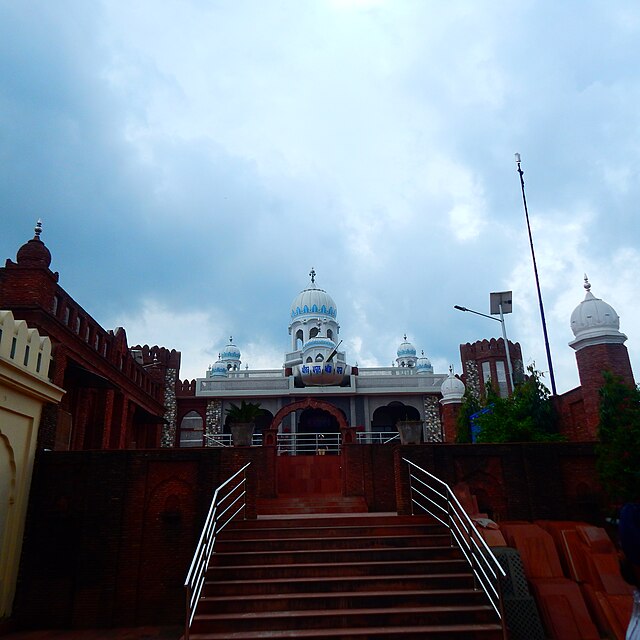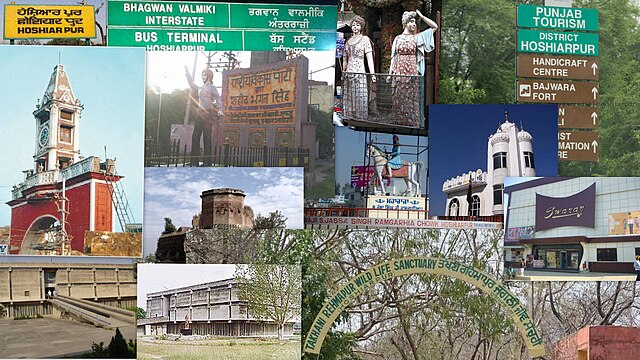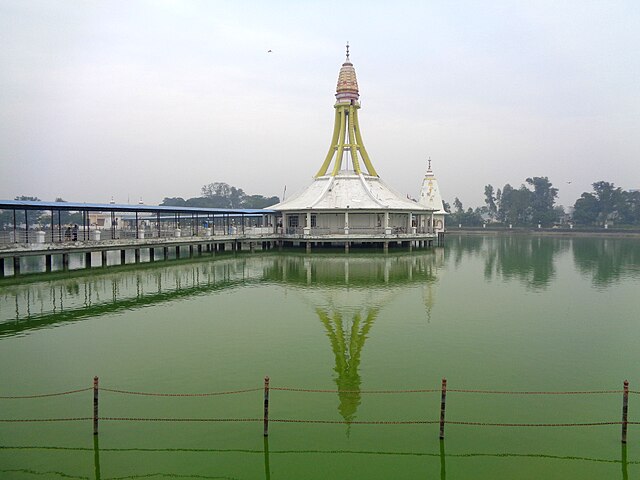Have you ever wondered what makes Hoshiarpur’s weather so unique? Nestled in the northeastern part of Punjab, this beautiful city experiences a fascinating blend of climatic conditions that make it stand out from other regions in India. Whether you’re planning a visit, considering relocating, or simply curious about this region’s weather patterns, you’ve come to the right place.
Hoshiarpur’s weather story isn’t just about temperatures and rainfall – it’s about how geography, seasons, and human life intertwine to create a living, breathing ecosystem. From scorching summers that test your endurance to refreshing monsoons that bring life back to the earth, every season here has its own personality and charm.
Understanding Hoshiarpur’s Geographic Location and Climate Influence
What makes Hoshiarpur’s weather tick? The answer lies in its strategic geographical position and the natural forces that shape its climate. Hoshiarpur is situated in proximity to the foothills of the Himalayas, and the nearby mountainous terrain has a moderating effect on temperatures, contributing to a more temperate climate compared to other inland areas.
This city sits like a perfect middle child between the plains and the mountains, receiving the best of both worlds. The geographical factors don’t just influence the weather – they create it, mold it, and give it character that you won’t find anywhere else in Punjab.
Himalayan Foothills Impact on Local Weather

Imagine the Himalayas as a massive natural air conditioner for Hoshiarpur. The proximity to these majestic mountains doesn’t just provide scenic beauty – it actively participates in weather creation. The foothills act as a barrier, intercepting moisture-laden winds and creating unique precipitation patterns.
During summer months, the mountains provide a cooling effect that prevents temperatures from reaching the extreme highs experienced in deeper plains areas. In winter, they offer protection from harsh northern winds, creating a more moderate climate than you might expect at this latitude.
The orographic effect – where air masses rise against mountain slopes – plays a crucial role in Hoshiarpur’s rainfall patterns. As moisture-heavy clouds encounter the Himalayan foothills, they’re forced upward, cool down, and release their precious cargo as rain, particularly during the monsoon season.
Latitude and Elevation Effects
Hoshiarpur’s position at approximately 31.5°N latitude places it in what meteorologists call the subtropical zone. This positioning is like winning a climate lottery – you get distinct seasons without the extreme variations that plague regions closer to the poles or the equator.
The elevation, hovering around 300 meters above sea level, adds another layer of moderation to the climate. It’s high enough to avoid the stifling heat of lower plains but not so high as to experience mountain weather extremes. This sweet spot creates what locals often describe as “just right” weather for most of the year.
The Four Distinct Seasons of Hoshiarpur
The city witnesses a subtropical climate with distinct seasons, each bringing its own set of characteristics, challenges, and beauty. Let’s dive deep into what makes each season special in Hoshiarpur.
Summer Season (March to June): Hot and Dry
When March arrives in Hoshiarpur, you know summer is knocking at the door. But this isn’t just any summer – it’s a season that transforms the entire landscape and lifestyle of the region.
Temperature Ranges and Heat Waves
Summers, extending from March to June, are characterized by warm to hot temperatures, often reaching above 40 degrees Celsius (104 degrees Fahrenheit). These aren’t just numbers on a thermometer – they represent a way of life that locals have adapted to over generations.
The temperature progression is like a slow-building crescendo in a symphony. March starts relatively mild, with temperatures hovering around 25-30°C (77-86°F), but by May and June, the mercury can soar beyond 45°C (113°F) on particularly intense days.
Heat waves during this period aren’t uncommon, and they can last for days or even weeks. The dry heat creates a unique sensation – it’s intense but somehow more bearable than humid heat. The air shimmers, creating mirages on roads, and the afternoon sun can be so intense that most outdoor activities grind to a halt.
Managing Summer Weather Challenges
How do people cope with such intense heat? The answer lies in centuries of adaptation and modern cooling solutions working hand in hand. Traditional architecture in Hoshiarpur features thick walls, courtyards, and strategic ventilation that creates natural cooling zones.
Modern residents combine traditional wisdom with contemporary solutions – air conditioning during peak hours, cotton clothing, increased water intake, and timing daily activities around the sun’s intensity. Many locals joke that summer in Hoshiarpur teaches you the true value of shade and water.
Monsoon Season (July to September): Life-Giving Rains

If summer is the trial by fire, monsoon is the blessed relief that everyone eagerly awaits. The arrival of monsoons in Hoshiarpur isn’t just a weather event – it’s a celebration, a festival of nature that transforms the entire region.
Rainfall Patterns and Agricultural Benefits
Monsoon season, spanning from July to September, brings relief with moderate to heavy rainfall, essential for the region’s agricultural activities. The rainfall doesn’t just fall – it dances, creating rhythms that have guided agricultural practices for millennia.
July typically marks the beginning with intermittent showers that gradually intensify. August often sees the heaviest rainfall, with daily precipitation that can range from light drizzles to torrential downpours. The total monsoon rainfall usually ranges between 600-800mm, though climate variations can push these numbers higher or lower.
The agricultural landscape comes alive during this period. Rice paddies fill with water, creating mirror-like surfaces that reflect the gray monsoon skies. The air fills with the earthy scent of petrichor – that distinctive smell when rain meets dry earth – creating an olfactory signature that defines monsoon in Hoshiarpur.
Monsoon Safety and Preparation
While monsoons bring life, they also bring challenges. Flash flooding in low-lying areas, waterlogging in urban zones, and increased humidity levels require careful preparation and awareness.
Local authorities and residents have developed sophisticated early warning systems and drainage management strategies. Traditional homes feature elevated foundations and sloped roofs designed to handle heavy rainfall, while modern constructions incorporate advanced drainage systems.
Post-Monsoon/Autumn (October to November): Pleasant Transition
Post-monsoon months, particularly October and November, offer a transition to cooler temperatures, marking the beginning of autumn. This period is often considered the most pleasant time of year in Hoshiarpur.
Weather Characteristics During Autumn
The post-monsoon period is like nature’s way of apologizing for the summer heat and monsoon humidity. Temperatures begin their gradual descent from the monsoon highs, settling into a comfortable range of 20-30°C (68-86°F).
Humidity levels drop significantly, creating crisp, clear days with brilliant blue skies. The air feels lighter, cleaner, and more breathable. This is the season when outdoor activities resume with enthusiasm, and the city comes alive with festivals and celebrations.
The landscape during this period showcases the monsoon’s handiwork – lush green fields, full rivers, and vegetation at its peak. It’s a photographer’s paradise and a nature lover’s dream come true.
Winter Season (December to February): Cool and Comfortable
Winter in Hoshiarpur is like a gentle whisper compared to the dramatic pronouncements of other seasons. It’s subtle, comfortable, and arguably the most livable season of the year.
Winter Temperature Patterns
Winter temperatures in Hoshiarpur are remarkably moderate. Daytime temperatures typically range between 15-20°C (59-68°F), while nighttime can see drops to 5-10°C (41-50°F). Frost is rare but not unheard of during particularly cold spells in January.
The Himalayan influence becomes particularly noticeable during winter, as cold air masses from the north are moderated by the time they reach Hoshiarpur. This creates what meteorologists call a “thermal comfort zone” – cool enough to be refreshing but warm enough to remain comfortable.
Winter Activities and Lifestyle Adjustments
Winter in Hoshiarpur brings a different rhythm to life. Morning fog can create ethereal landscapes, particularly in December and January. The clear, crisp air makes this the perfect season for outdoor activities, sightseeing, and agricultural activities like wheat sowing.
Local markets come alive with winter vegetables, and traditional woolen garments make their annual appearance. It’s the season for bonfires, hot tea, and long conversations under the gentle winter sun.
Monthly Weather Breakdown for Hoshiarpur
Understanding Hoshiarpur’s weather requires looking beyond seasons to examine how each month contributes to the annual weather narrative.
January Through March: Winter to Spring Transition
January starts as the coolest month, with clear skies and comfortable temperatures. February begins showing signs of warming, while March marks the definitive end of winter. This transition period is characterized by increasing temperature ranges and decreasing humidity levels.
Morning mist in January creates magical landscapes, while March brings the first hints of summer heat during afternoon hours. It’s a period of gradual change that locals use for outdoor activities and agricultural planning.
April Through June: Peak Summer Months
April begins the serious ascent toward peak summer conditions. May and June represent the climax of heat intensity, with temperatures that can challenge even seasoned residents. This period requires significant lifestyle adjustments and increased awareness of heat-related health issues.
The dry heat during these months creates unique atmospheric conditions – dust storms can occur, and the landscape takes on a golden, sun-baked appearance that has its own stark beauty.
July Through September: Monsoon Dominance
July’s arrival of monsoons completely transforms the atmospheric conditions. Temperatures drop, humidity rises, and rainfall becomes the dominant weather feature. August typically sees the most intense monsoon activity, while September begins the gradual transition toward post-monsoon conditions.
This period is characterized by dramatic weather changes – sunny mornings can transform into stormy afternoons, and the sound of rain becomes the constant soundtrack to daily life.
October Through December: Autumn to Winter
October’s pleasant post-monsoon conditions gradually give way to November’s cooler temperatures and December’s definitive winter arrival. This period showcases some of the most comfortable weather conditions of the entire year.
The transition is gentle but steady, with each month bringing noticeable changes in temperature, humidity, and atmospheric clarity. It’s the period when residents often say Hoshiarpur shows its best weather face to the world.
Weather Patterns and Agricultural Connection

Weather in Hoshiarpur isn’t just about human comfort – it’s intrinsically connected to the agricultural heartbeat of the region.
Impact on Local Farming Practices
The seasonal weather patterns have shaped agricultural practices for centuries. Summer’s intense heat determines crop selection and irrigation strategies. Monsoon timing affects planting and harvesting schedules. Winter’s moderate conditions allow for diverse crop cultivation.
Farmers in Hoshiarpur have developed sophisticated understanding of micro-weather patterns, reading cloud formations, wind directions, and atmospheric pressure changes to make crucial agricultural decisions.
Crop Cycles and Weather Dependency
The two main crop seasons – Kharif (monsoon-dependent) and Rabi (winter crop) – are perfectly aligned with Hoshiarpur’s weather patterns. Rice, cotton, and sugarcane thrive during the monsoon period, while wheat, barley, and various vegetables flourish in the winter months.
This weather-agriculture synchronization has created a sustainable farming ecosystem that supports both local food security and economic stability.
Weather Forecasting and Modern Technology
In today’s digital age, accessing accurate weather information for Hoshiarpur has never been easier.
Reliable Weather Sources for Hoshiarpur
Multiple weather services provide forecasts for Hoshiarpur, including national meteorological departments, international weather services, and specialized regional platforms. The accuracy of short-term forecasts (1-3 days) has improved significantly with advanced satellite technology and computer modeling.
Local weather stations and automatic weather monitoring systems provide real-time data that helps both residents and visitors plan their activities more effectively.
Mobile Apps and Digital Resources
Smartphone applications have revolutionized weather monitoring in Hoshiarpur. Apps provide hourly updates, severe weather alerts, and extended forecasts that help users make informed decisions about outdoor activities, travel plans, and agricultural operations.
Social media platforms have also become informal weather information networks, where residents share real-time conditions and local weather observations.
Climate Change Impact on Hoshiarpur Weather
Like many regions worldwide, Hoshiarpur’s weather patterns are experiencing the effects of global climate change.
Recent Weather Pattern Changes
Long-term residents report subtle but noticeable changes in traditional weather patterns. Summer temperatures may be trending slightly higher, monsoon patterns show some irregularity, and winter seasons might be becoming shorter.
These changes require adaptive strategies in agriculture, urban planning, and daily lifestyle choices. The key is understanding these trends while maintaining perspective on natural weather variability.
Future Climate Projections
Climate scientists predict that Hoshiarpur may experience intensified weather extremes – hotter summers, more erratic monsoons, and possibly shorter transition seasons. However, the region’s geographical advantages may help moderate some of these projected changes.
Adaptation strategies being developed include improved water management systems, heat-resistant crop varieties, and urban planning that considers changing weather patterns.
Best Times to Visit Hoshiarpur Based on Weather

Planning a visit to Hoshiarpur? Weather should definitely influence your decision.
Tourist Season Recommendations
The period from October through March represents the optimal visiting season. October and November offer post-monsoon freshness with comfortable temperatures. December through February provide cool, pleasant conditions ideal for sightseeing and outdoor activities.
March can be delightful for those who enjoy mild warmth, while April might appeal to visitors who can handle increasing heat. Summer months (May-June) are challenging for tourism, and monsoon season requires specific preparations.
Weather-Based Activity Planning
Different activities align better with specific weather conditions. Historical site visits are perfect during winter months. Photography enthusiasts might prefer post-monsoon clarity and lush landscapes. Adventure activities work best during the comfortable temperature ranges of autumn and winter.
Cultural festivals and local events are often scheduled around favorable weather conditions, providing visitors with authentic experiences during optimal climate periods.
Weather Preparation Tips for Residents and Visitors
Success in any climate requires proper preparation and understanding.
Seasonal Clothing Recommendations
Summer demands light-colored, loose-fitting cotton clothing, wide-brimmed hats, and adequate sun protection. Monsoon season requires waterproof clothing, quick-dry fabrics, and proper footwear for wet conditions.
Winter calls for layering strategies – light woolens for daytime and warmer clothing for evening and early morning hours. The key is versatility, as temperature variations within a single day can be significant.
Health and Safety Considerations
Each season brings specific health considerations. Summer requires increased hydration, heat stroke prevention, and sun protection. Monsoon season demands attention to water-borne diseases and proper hygiene. Winter might require vitamin D supplementation due to reduced sunlight exposure.
Staying informed about weather forecasts, having emergency preparedness plans, and understanding seasonal health risks are essential for both residents and visitors.
Conclusion
Hoshiarpur’s weather is much more than just daily temperature and rainfall readings – it’s a complex, beautiful symphony of geographical influences, seasonal rhythms, and human adaptation. From the challenging heat of summer that tests resilience to the refreshing monsoons that bring life back to the land, every season contributes to the unique character of this remarkable city.
Understanding Hoshiarpur’s weather patterns helps you appreciate not just the climate, but the entire lifestyle, culture, and agricultural practices that have evolved around these natural rhythms. Whether you’re a resident learning to read the subtle signs of changing seasons or a visitor planning the perfect time to explore this beautiful region, weather awareness enhances every aspect of your Hoshiarpur experience.
The city’s weather story continues to evolve with climate change and modernization, but its fundamental character – shaped by Himalayan foothills, subtropical positioning, and seasonal diversity – remains a defining feature that makes Hoshiarpur truly special. By understanding and respecting these weather patterns, we can better appreciate the delicate balance between human life and natural forces that makes this region so uniquely livable and lovable.
Frequently Asked Questions (FAQs)
1. What is the best month to visit Hoshiarpur for pleasant weather?
November is often considered the ideal month, offering post-monsoon freshness with comfortable temperatures ranging from 15-25°C, clear skies, and low humidity levels.
2. How extreme does the summer heat get in Hoshiarpur?
Summer temperatures can reach above 40°C (104°F) during May and June, with some days experiencing heat waves that push temperatures to 45°C (113°F) or higher.
3. When does the monsoon season typically start and end in Hoshiarpur?
The monsoon season usually begins in early July and continues through September, with August typically receiving the heaviest rainfall of the year.
4. Is winter clothing necessary in Hoshiarpur?
Light winter clothing is recommended during December and January when nighttime temperatures can drop to 5-10°C (41-50°F), though heavy winter gear is usually not required.
5. How does Hoshiarpur’s weather compare to other Punjab cities?
Hoshiarpur generally experiences more moderate temperatures than deeper plains cities due to its proximity to the Himalayan foothills, making summers slightly cooler and winters more comfortable than cities like Ludhiana or Bathinda.

